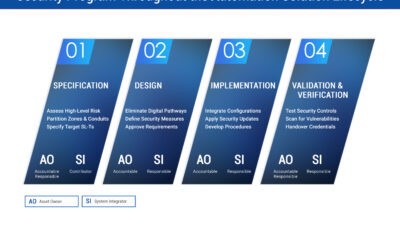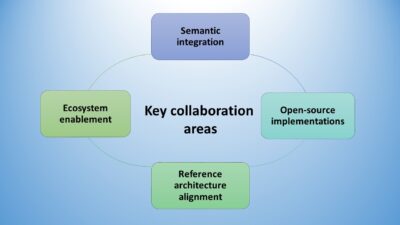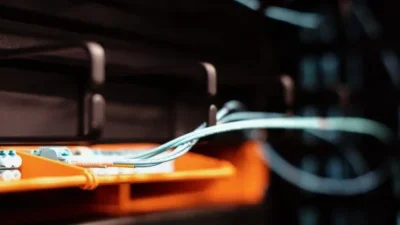How interdependent infrastructure, cyber threats and rising public scrutiny are reshaping industrial risk management.

Risk management insights
- The pandemic exposed how tightly linked global supply chains and infrastructure systems truly are. Disruptions in one area—no matter how unexpected—can ripple across sectors, turning minor issues into major operational crises.
- As society depends more on resilient infrastructure, manufacturing leaders face greater regulatory, public, and investor attention. This scrutiny presents both risks and opportunities
- Reactive risk management is no longer sufficient. Manufacturers must adopt a system-wide view of risk, investing in flexibility, redundancy, and cybersecurity.
The pandemic served as an unprecedented stress test for global supply chains and critical infrastructure, revealing vulnerabilities that many executives never anticipated.
What emerged from this crisis was a stark reality: The interconnected nature of modern manufacturing and infrastructure systems means that disruptions in seemingly unrelated sectors can cascade into operational nightmares overnight.
The new reality of infrastructure interdependence
The sudden recognition that toilet paper manufacturing could become critical infrastructure exemplifies how quickly priorities can shift in crisis situations.
For decades, manufacturing leaders operated under the assumption that certain supply chains were stable and predictable. The pandemic shattered these assumptions, demonstrating that virtually any component of the industrial ecosystem can become mission-critical when faced with seemingly insurmountable external pressures.
This interconnectedness extends far beyond consumer goods. Power grids, water systems, transportation networks and telecommunications infrastructure all rely on manufacturing components and services that were previously taken for granted.
When one system falters, the ripple effects can paralyze entire industrial sectors, creating cascading failures that impact everything from production schedules to worker and human safety.
The growing spotlight on industrial operations
As society becomes increasingly aware of infrastructure vulnerabilities, manufacturing and critical infrastructure operators are finding themselves under unprecedented scrutiny.
The public impact of infrastructure failures has grown exponentially as communities become more dependent on reliable systems for everything from remote work capabilities to essential services delivery.
This heightened visibility brings both challenges and opportunities. On one hand, operational failures now carry greater reputational and regulatory risks.
On the other hand, there’s growing recognition of the strategic importance of industrial operations, often leading to increased investment and support for modernization of plant infrastructure and implementation of industrial cybersecurity solutions.
Proactive strategies for infrastructure resilience
The lesson for manufacturing and infrastructure leaders is clear: Waiting for regulatory mandates or shareholder pressure is no longer a viable strategy.
Organizations that take proactive steps to assess and strengthen their operational resilience will be better positioned to weather future disruptions and capitalize on emerging opportunities.
This proactive approach requires a fundamental shift in how executives view risk management. Traditional risk assessments often focus on internal operational hazards, but current trends and heightened cyberattacks require a broader perspective that considers interdependencies across sectors and supply chains.
Manufacturing leaders must now think like systems architects, understanding how their operations fit into larger supply chains and networks of critical infrastructure. Investment in redundancy and flexibility has become a necessity in our current heightened risk environment.
The regulatory and market response
Government agencies and investors are taking notice of infrastructure vulnerabilities, signaling that regulatory requirements and investment criteria will prioritize resilience.
Forward-thinking executives are already incorporating these considerations into their strategic planning, recognizing that compliance and access to capital may increasingly depend on necessary infrastructure security measures.
The companies that emerge the strongest from this transition will be those that view infrastructure resilience not as a cost center, but as a strategic differentiator.
By building robust, flexible operations that can adapt to changing conditions, these organizations position themselves to capture market share when competitors struggle with disruptions.
Moving forward with strategic intent
The message for industrial leaders is straightforward: The time for reactive approaches to industrial infrastructure management is over. The interconnected nature of modern industrial systems means that vulnerabilities anywhere in the network can impact operations everywhere.
By taking proactive steps to understand and strengthen these connections, manufacturing and critical infrastructure executives can transform potential weaknesses into competitive strengths.
The organizations that recognize this shift and take necessary action will define the standards for industrial cybersecurity excellence.
AUTHOR
Dino Busalachi has more than three decades of global experience across information technology (IT), engineering and industrial control systems (ICS) with multiple globally recognized brands including Rockwell Automation, Anheuser Busch, American Standard, General Motors and more. Dino has deep knowledge and understanding of the inner workings of ICS, OT, IoT and technology solutions across almost every major vertical.
LEARNING OBJECTIVES
- Understand how infrastructure interdependence increases the risk of cascading operational failures.
- Recognize the growing scrutiny and strategic importance of industrial operations in a post-pandemic world.
- Identify proactive strategies to improve resilience, including broader risk assessments and cybersecurity investments.
CONSIDER THIS
Is my organization treating infrastructure resilience and cybersecurity as strategic priorities — or just compliance checkboxes?



